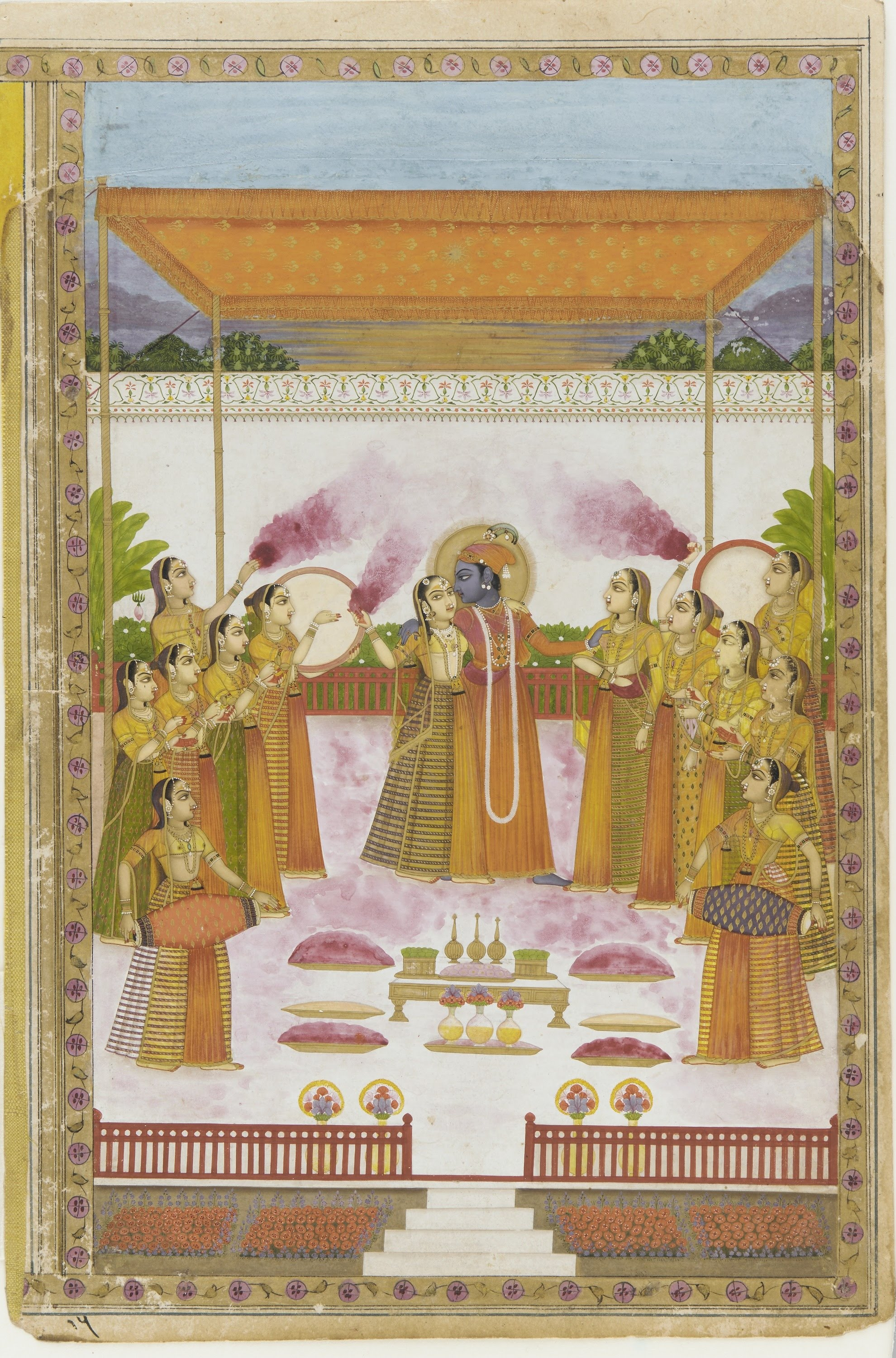Holi is celebrated at the end of the winter season on the last full moon day of the lunar month Phalguna (February/March), (PhalgunPurnima), which usually falls in the later part of February or March. In most areas, Holi lasts about two days. One of Holi’s biggest customs is the loosening strictness of social structures, which normally include age, sex, status, and caste. Holi closes the wide gaps between social classes and brings Hindus together. Together, the rich and poor, women and men, enjoy each other’s presence on this joyous day. Additionally, Holi lowers the strictness of social norms. No one expects polite behavior; as a result, the atmosphere is filled with excitement and joy.

Every year,thousands of Hindus participate in the festival Holi. Waiting for the day after the full moon in the month of Phalguna, or early March, These men and women are ready to spread the joy. Holi has many purposes. First and foremost, it celebrates the beginning of the new season, spring. It also has a religious purpose, commemorating many events that are present in Hindu mythology. Although it is the least religious holiday, it is probably one of the most exhilarating ones in existence. During this event, participants hold a bonfire, throw colored powder at each other, and celebrate wildly.

Every year,thousands of Hindus participate in the festival Holi. Waiting for the day after the full moon in the month of Phalguna, or early March, These men and women are ready to spread the joy. Holi has many purposes. First and foremost, it celebrates the beginning of the new season, spring. It also has a religious purpose, commemorating many events that are present in Hindu mythology. Although it is the least religious holiday, it is probably one of the most exhilarating ones in existence. During this event, participants hold a bonfire, throw colored powder at each other, and celebrate wildly.
Originally, it was a festival that commemorated good harvests and the fertile land. In addition to celebrating the coming of spring, Holi has eve
Significance
In Vaishnavism, Hiranyakashipu is the great king of demons, and he had been granted a boon by Brahma, which made it almost impossible for him to be killed. The boon was due to his long penance, after which he had demanded that he not be killed "during day or night; inside the home or outside, not on earth or in the sky; neither by a man nor an animal; neither by astra nor by shastra". Consequently, he grew arrogant and attacked the Heavens and the Earth. He demanded that people stop worshipping Gods and start praising him.
According to this belief, Hiranyakashipu's own son, Prahlada, was a devotee of Lord Vishnu. In spite of several threats from Hiranyakashipu, Prahlada continued offering prayers to Lord Vishnu. He was poisoned by Hiranyakashipu, but the poison turned to nectar in his mouth. He was ordered to be trampled by elephants yet remained unharmed. He was put in a room with hungry, poisonous snakes and survived. All of Hiranyakashipu's attempts to kill his son failed. Finally, he ordered young Prahlada to sit on a pyre on the lap of his demoness sister, Holika, who could not die because she also had a boon. And a boon which would prevent fire from burning her. Prahlada readily accepted his father's orders, and prayed to Vishnu to keep him safe. When the fire started, everyone watched in amazement as Holika burnt to death, while Prahlada survived unharmed, the burning of Holika is celebrated as Holi.
Later Lord Vishnu came in the form of a Narasimha (who is half-man and half-lion) and killed Hiranyakashipu at dusk (which was neither day nor night), on the steps of the porch of his house (which was neither inside the house nor outside) by restraining him on his lap (which is neither in the sky nor on the earth) and mauling him with his claws (which are neither astra nor shastra).
In Vrindavan and Mathura, where Lord Krishna grew up, the festival is celebrated for 16 days (until Rangpanchmi) in commemoration of the divine love of Radha for Krishna. The festivities officially usher in spring, the celebrated season of love.
There is alternative story detailing the origin of Holi. This story is about Kamadeva, a god of love. Kama's body was destroyed when he shot his weapon at Shiva in order to disrupt his meditation and help Parvati to marry Shiva. Shiva then opened his third eye, the gaze of which was so powerful that Kama's body was reduced to ashes. For the sake of Kama's wife Rati (passion), Shiva restored him, but only as a mental image, representing the true emotional and spiritual state of love rather than physical lust. The Holi bonfire is believed to be celebrated in n greater purposes. Hindus believe it is a time of enjoying spring's abundant colors and saying farewell to winter. Furthermore, Holi celebrates many religious myths and legends.
Rangapanchami occurs a few days later on a Panchami (fifth day of the full moon), marking the end of festivities involving colours.
Happy holi
Happy holi

I liked Krishna-Radha reason.
ReplyDeletepardon, Radha-Krishna reason, when going to Mathura to defeat Kansa, they gave Radha a 'Vardaan' that everyone would take her name first before his.
ReplyDeleteIsn't it very nice, I wish I was born years ago and could see Radha-Krishna playing Holi (with flowers):)